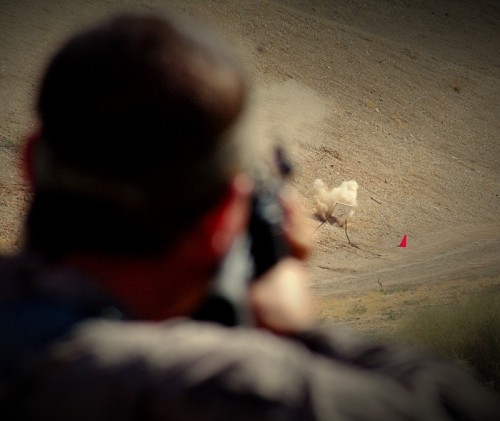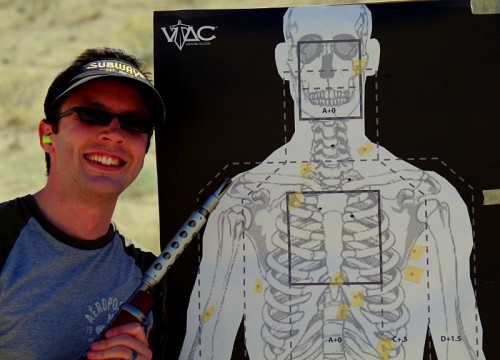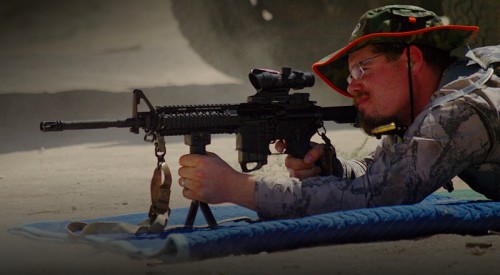This is another post elicited from The Lucifer Effect by Philip Zimbardo. First, a word about the book. The first bit of the book is a walk-through of the events that occurred during the Stanford Prison Experiment. He bases it off of the transcripts and recordings that were made and he keeps it accurate and scientific, but the transcripts of interactions between guards and prisoners is riddled with obscenities–just a word of warning to anyone planning to read it. If that bothers you, you can just skip those chapters and move right into the discussion afterwards, but you may not fully appreciate the transformation of the participants.
This post comes from chapter 12, from a subsection entitled “Ten Lessons from the Milgram Studies: Creating Evil Traps for Good People” which begins on page 273.
Stanley Milgram ran a long series of experiments that involve participants believing that they are inducing increasingly powerful electro-shocks to another participant (a confederate acting the part of being shocked). They do so under the guise of a memory-enhancement training program while being watched and ordered about by an official looking “scientist.” During the course of the experiment the participants must administer a shock each time the “learner” provides a wrong answer. During the course of the experiment the confederate “learner” screams in pain, demands to be released (he’s strapped down), complains about his heart hurting, and eventually stops responding (suggesting to the participant that the learner has become unconscious).
The participants almost always look to the “scientist” for guidance as things get bad, but the scientist always gives them reasons to continue with the experiment unless they simply get up and leave. 65% of participants followed the experiment all the way through the 30 levels of shocks.
Milgram ran this experiment over and over again all around the world making slight variations on the design to try and learn more about what factors contribute to participants’ conformity. It’s really interesting.
I want to talk about the 10 methods of inducing compliance that are pulled from Milgram’s experiments. These techniques are used very successfully in myriad settings including: salespeople, cults, the military, governments, advertising, and others. Each item has its own paragraph, so I’m going to summarize them briefly:
- Create a contractual obligation (verbal or written).
- Give participants a role to fill (“teacher” in the above).
- Dictate a set of rules to be followed which can then be used to coerce behavior.
- Replace potential unpleasant descriptions with positive descriptions (“shocking victims” to “helping a person learn”).
- Tell participants that someone else will take responsibility for what happens.
- Use an initial innocuous-appearing step to elicit initial compliance.
- Use successive steps towards the end goal, each of which seems like a negligible change from the previous step.
- Have the authority figure slowly change from “just and reasonable” to “unjust and demanding.”
- Make it difficult and expensive (in some form, not necessarily monetary) to exit the situation, but allow verbal dissent while demanding behavioral compliance.
- Provide some “greater good” for participants to believe in.
The last one is interesting. Zimbardo elaborates discussing Erich Fromm’s 1941 work Escape from Freedom. In this work, Fromm discusses how throughout time the “greater good” used by dictators and tyrants in order to convince citizens to give up their freedoms is a promise of security.
I also can’t help but read that list and think of how accurately it fits with how the TSA has operated since its creation. Here’s how I think the rules (except 2 and 5) easily apply to the TSA’s behavior:
- Can’t fly unless you agree to be screened.
- —
- Laptops out, liquids in baggy, shoes off, belts off, coats off, “step over here.”
- We’re not violating your civil rights, we’re protecting you from terrorists!
- —
- Just step through the metal detector, it’s quick, easy, and somewhat effective.
- Okay, now we just need you to take your shoes off. And your belt. And your coat. And remove your computer. Oh and just put your liquids in a baggy for us. And stand in this chemical sniffer. Also, if you wouldn’t mind, just stand here while we bounce radiation off of you to create an image of your body.
- Any appeal to reason or logic is met with a stiff reference to the rules and to fall in line or you just might miss your flight.
- Don’t want to be part of the TSA process? Your only option is to not travel by plane (and soon by bus or rail if the TSA gets its way). Have a complaint? You can file it with headquarters and we’ll say “thanks for your concern” and then completely ignore it and tell you to get back in line.
- It’s for your own protection.
If you’re so inclined you can probably turn these around and see how they are used against the TSA agents to convince them that further abuse of passenger’s civil rights is acceptable.
It’s incredibly effective. Just think of what the national reaction would have been if, when the TSA was instituted, they had rolled out the body imaging scanners and said these are now required for all flights. People would have flipped out. Instead it was one slow addition to the rules after another until people just accepted the new scanners. Those that did complain were told that their comments were appreciated and then nothing changed. Now the TSA talks about how few complaints they get about the scanners / pat-downs (only several hundred per year!) which is a useless figure because it ignores the thousands of people who will no longer fly to avoid the issue (like myself). As of July 2011, Amtrak has had 20 consecutive months of record numbers of passengers, but surely that has nothing to do with how awful and demeaning airports have become.








